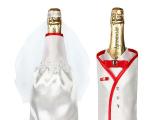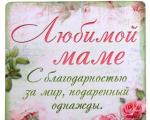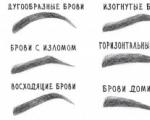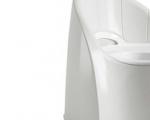Lesson on applique in the senior group “Composition of geometric shapes. Geometric applique - the best ideas for children's creativity
Raising a child begins at birth. Growing up, he begins to explore the world around him. At approximately 3-4 years old, the child goes to kindergarten. In the garden, he is given the necessary knowledge, skills and abilities, which the child develops through the systematic repetition of the necessary exercises.
What do they teach in kindergarten?
Education until the age of seven. After this, the child is sent to school, to first grade. In kindergartens, children are taught work, basic skills, and given the necessary knowledge.
At 3-4 years old, children learn to properly hold pens, pencils, spoons, etc., take care of themselves and their clothes, become familiar with numbers and letters, as well as geometric shapes. To consolidate acquired knowledge and generalize existing knowledge, the teacher conducts didactic games.
At the age of 5-6, children begin to prepare for school. At this age, they learn to count within 10, compare objects, navigate in space, write and letters, read, make crafts from geometric shapes, and get acquainted with geometric bodies.
In addition to knowledge and skills, it is necessary to develop in children to teach them to think outside the box, to find unnecessary objects or words. Logic needs to be developed with the help of certain didactic games aimed at this topic.
Ideas about geometric shapes
First of all, children are introduced to such shapes as square, circle, oval, rectangle, triangle. When preschoolers are well versed in them and can accurately name each one, it is necessary to introduce new concepts: polygon, trapezoid and rhombus.
Having introduced existing figures, the teacher not only repeats their names with the children, but also teaches them how to make crafts from geometric figures, for example: a house, a tree, a chicken, a bunny, etc.
In the future, geometric figures will be found in tasks in mathematics, drawing, and appliqué.
As soon as the children have memorized all the figures, the teacher introduces the concept of “geometric bodies.” differ from geometric bodies, so the teacher focuses the attention of preschoolers on their differences and features. It is very important to teach kids to draw shapes on a sheet of paper, as well as cut them out of colored paper.
When making paper crafts, geometric shapes must be placed in front of you for comparison or as a sample. In the first stages, you can use templates for clarity.
Volumetric crafts
If at the very beginning children are just getting acquainted with geometric bodies, then by the age of 5-6 they should be able to draw the desired figure and be able to cut it out. All work should be done without the help of adults or peers.
Also, at the age of 5-6 years, children should be able to make crafts from three-dimensional geometric shapes. The work takes place under the supervision of a teacher and with step-by-step instructions.
- Preschoolers examine and analyze a sample of work (they clarify what geometric shapes they have to draw).
- Draw a drawing of the desired figure on colored paper.
- After making sure that all the figures are depicted correctly, cut them out.
- Using glue, connect all the parts into a single whole.
- The work is ready, you can turn it in to the teacher.

As a result, children get the desired volumetric craft.
Any object can be represented using colored paper in the form of geometric shapes. The main thing is your imagination. For example, if you need to depict a house, then the walls and windows will be in the form of a square, the roof will be a triangle, the chimney and door will be a rectangle. We “draw” a bear: the head, paws, ears are a circle, the nose is a triangle, and the body is a square. The fish has a body - triangles, eyes - circles.
The procedure for completing a craft consisting of geometric shapes
- First you need to decide on the application.
- Having chosen the desired picture, children examine and name all the geometric shapes located in the picture.
- Select certain colors and draw the necessary shapes.
- Cut out each shape along the contour.
- Start gluing the parts. It is important to remember that the largest part is glued first, and the smaller ones are placed on top of it.
- When completing the work, the children demonstrate the craft to the teacher.

Thus, by making crafts from geometric shapes, children develop their hands, as well as skills in working with geometric material. Using your imagination, you can create any applique from the desired shapes.
In this book you will find many unusual games on development in children, imagination, memory, logic, hearing, reaction, independence and non-standard... ... the book for both an art therapist and psychologist is a return to the pleasure of play and creativity. Sticky, viscous, cold, warm, shiny, flexible, spicy, soft, sweet... ....mom) From the Fields we still love to play with plasticine, sand, and make various appliqués, but we didn’t have such popular sensory boxes. But I feel...
Update date: 04/12/2018
Ideas for joint activities with children of different ages
Cereals through a sieve - each child should have their own sieve. Transfusions and games with water Development motor skills, preparing the hand for writing. Development motor skills are very important for children... ... maintaining a harmonious sequence. Simple math: a box called Ten Creation. Joint activities creativity for children of different ages, organize not... ... cotton wool - such an activity will entertain him for a long time. The older child can do at this time applique: glue pieces of colored paper onto a blank drawing. - Sculpt from plasticine...
Update date: 07/01/2017
I would become an artist... Why do children need drawing?
Which then need to be painted, multi-colored sand for paintings. In recent years, such types have been gaining popularity in Russia. creativity, like quilling (volumetric appliqués from folded narrow strips of multi-colored paper), origami (national Japanese creation, folding paper toys), scrapbooking (designing photo albums, notebooks and postcards of various kinds appliqués). Of course, it is not easy for children to do some of them. For example, excellent quality is very important for quilling developed fine motor skills, and it may be difficult for a baby to hold in his hands and correctly glue these narrow paper strips rolled up like a snail, which tend to unfold at the most inopportune moment... But don’t be in a hurry to lose heart: in some types creativity ...
Update date: 10/20/2016
The largest list of games for activities with your baby
Depict other animals (walk like a bear, jump and croak like a frog, etc.). DEVELOPMENT logic 1. “Collect only” (learn to choose from scattered objects only... ... (ant, bee, etc.). 20. Sun, clouds, moon, moon, stars, rain, snow, puddles. Creation 1. Drawing: with wax crayons, paints, felt-tip pens (it’s better to use water... ... a child will easily learn at 1.5 years old, something will “come” after two - it’s different for everyone. 9. Application made of paper (various textures), applique from torn paper, applique from...
Update date: 06/20/2016
Creativity with two children: more fun together!
The opportunity to develop both children at once. With this activity you can maximally develop fine motor skills, a sense of colors, development fantasies and many other aspects of raising children. This activity also tends to delight absolutely everyone... ... potato stamps. Arouse the imagination of children, infect them with a new idea - and enjoy the peace and happiness that is saturated creation with children! Volumetric appliqués with a non-standard approach Not a single child will refuse to do applique in the company of your brother or sister. Can...
This article is intended for practicing appliqué with children. Geometric applique will unobtrusively introduce the baby to the basic properties of objects: size, color, shape. The drawing is made up of simple geometric shapes. The application is associated with cognitive activity and has a huge impact on the development of the child’s creative and mental abilities. It will be of great benefit and will help develop work skills.
When starting to introduce your child to the app, you need to remember three main rules:
1) the child cannot hold his attention for a long time
2) he should be interested
3) the child needs praise for the work done.
Before starting class, cut out geometric shapes of different colors and sizes. Pay the baby's attention to the figure, its color and size. Help me put the shapes in the right order.
Flower applique.

If the child is still very small, then it is better to perform the application together. Place the flower on paper and ask your child to repeat after you. Show how to use glue and glue a picture.
At first, use 2-3 geometric shapes in the application; for better memorization, pronounce the names and comment on your actions.

The flower is made of circles and squares. The circles are the petals of the flower, and the squares laid out in the shape of a diamond are the stem of the flower.
Caterpillar applique.

The caterpillar is made entirely of circles and only a small triangle is required for the mouth.

Butterfly applique.

The butterfly applique will be more complex, it includes new geometric shapes. The number and size of parts increases.

It’s worth trying to make a general picture of geometric shapes with your child. First, work out each element of the future picture separately (flower, butterfly, caterpillar), and then assemble the overall picture.
While doing appliqué with your child, ask him who he is portraying? Who are caterpillars and what do they turn into? By conducting classes using this method, the child’s horizons develop.
Winter picture.

If it’s winter outside, then you should try to make a simple winter geometric applique.
House applique.

First, we try to lay out the house from the figures, and then glue it onto the base for the applique.

Christmas tree applique.

We assemble the Christmas tree from green triangles, and from small circles we make beads for the Christmas tree.

Snowman applique.

Everything is also simple with the snowman, it consists of circles of different sizes, one trapezoid and two different small triangles.

Application of geometric shapes "Cats and mice".





Geometric paper applique. Garland.
Our task is to teach the child to stick exactly geometric shapes: circles and ovals, rhombuses and triangles, squares and rectangles, alternating them by color and shape. Show your child how to make a paper applique, imitating a garland on a string using circles and flags.

Ship made of geometric shapes.
The geometric application should be interesting, not very complicated and not very simple, only then can the child be interested in the work. Cut out various geometric shapes from colored paper and construct different ships from them. It can be one large ship or several small ones, with sails or a funnel. Glue the result you like onto paper.


And if some of you think that working on creating appliqués is a child’s job, they are deeply mistaken; skilled craftsmen create amazingly delicate and jewelry-like works using such techniques. And then, those around you cannot understand at all from what material this or that is made. The main thing in any technique is to have a strong desire and desire to create something very beautiful and quickly move towards the intended goal.

Well, such an activity will always be interesting for your children, even for the most restless ones. After all, this is, first of all, the creation of some element that is involved in cutting out figures, and children always like to cut out. Then work with glue - which the kids often also like, especially when they can get dirty and spill something that they wouldn’t otherwise.
The main thing for work is that you should have on hand such tools that will help you create geometric shapes: a ruler, a compass, a square, various drawing patterns, scissors, a simple pencil, PVA glue, glue brushes, cardboard, a sketchbook and, of course , colored paper.

Using shapes like these, you can primarily create bookmarks for books. They will be useful not only in work, but also as a gift from kids. After all, any work done by a child’s hands carries positivity and refined feelings from a little soul.
Children enjoy doing paper crafts. Many of them love paper appliqué and enjoy completing tasks related to gluing colored paper in class. However, small children cannot use scissors so well yet. Therefore these geometric triangle appliques designed for preschoolers and 1st grade students.
A teacher or kindergarten teacher will be able to quickly cut out the necessary parts from colored paper and distribute them to the children. As a sample for applique, I suggest the works “Herringbone” and “Fish”, but you can come up with other funny shapes from triangles.
How to make an applique from triangles
- sheets of colored paper (two colors, for example red and yellow),
- thick sheets of white paper,
- tassels,
- scissors (for adults).
Application of triangles "Fish"

- For children who cannot cut out on their own, the parent (teacher) cuts out geometric shapes - triangles - using a template from colored paper. The triangles will be of different sizes.
- Each child (in the garden) is given boxes with cut out colored parts, a sheet of white thick paper, and glue.
- Children should be shown a sample so that they know what application they will be doing in class. You need to pay attention to the shape (say that these are triangles), the size of the parts (ask them to find small and large ones), ask what color the parts are in their boxes.
- After this, you need to tell us that this application is not easy. To make it work, you need to correctly lay out the triangles on your sheet of paper. To get children to think, you can give them unlined templates. If there is no time for this task, then you need to show the templates according to which the children will assemble the figurine.
- Let the child choose the template himself. You can even have the children assemble all the templates one by one (without glue, just placing the triangles on the paper). This is one of the lessons on logic.
- After the fish template is chosen, the teacher shows how to apply glue to triangles of colored paper and how to correctly stick them to a sheet of white paper (strictly in the center so that it looks beautiful). Children often start gluing triangles without first laying out the entire figure - as a result, the tail or fins of the fish stick out beyond the edges of the sheet.

7. The parent (educator) must not only praise the child for the work done, but also point out mistakes (if any). Each work is signed (date, year, child’s name). 8. After drying, the work can be put on display or on a shelf in the child’s room.
Applique of triangles "Herringbone"
This application is similar to the one described above, but a little more complicated. The parts are glued in a certain sequence and with overlap.
Materials for making the application:
- sheets of colored paper (two colors - green and brown),
- thick sheets of white paper,
- glue (glue stick for kids),
- tassels,
- scissors (for adults).

- The parent (teacher), as in the “Fish” application, cuts out triangles from colored paper and distributes them to the children.
- Before the lesson, children should be shown the finished work and told how beautiful and interesting it is. Next, you need to draw the children’s attention to the fact that this application is tricky. To make it look beautiful, you need to glue the triangles with overlap.
- Children lay out the triangles on the sheet independently. An adult explains in what order the figures should be glued to make a beautiful Christmas tree.
- Children glue triangles onto a white sheet of paper using a template (an adult corrects the work and helps correct mistakes). Be sure to praise the child at the end of the lesson.
- The finished works are dried under a press and then exhibited at the exhibition.

Applications from geometric shapes
In general, applications can be made from any geometric shapes. We have already examined triangles, but there are many other shapes: circles, squares, rectangles, rhombuses. Let's try together with the children to assemble fun applications using a ready-made pattern.
Boys prefer crafts with a variety of equipment and machines. Try offering little boys applications with a crane, a car, a steam locomotive, a boat or a rocket.

All that is required of the parent is to print out the template on a piece of paper. The child cuts out the details according to the sample and glues them onto the base. The picture can be supplemented with an inscription or the background can be colored with colored pencils or felt-tip pens.
I know children, and I’ll warn you right away - if a child likes such developmental activities, then you won’t get away with just a template. It's better to print several at once.
Girls will also not be left without applications. You can offer them templates for appliqué with animals. The technology for making such applications does not differ from the above-described option for machines. You print out the template, the child cuts out geometric shapes from paper and sticks them on the outline. The end result is a beautiful and entertaining applique with a mouse, fox, squirrel, horse and other animals.

Don’t forget, you don’t just need to hand your child a picture and scissors with glue. Be sure to repeat the names of geometric shapes, and at the same time the colors. Help and tell your child if he has forgotten the name of the figure. Then your classes will be real developing creativity.
Lessons in geometric appliqué using simple shapes (triangles) are accessible and simple. Believe me, the kids will love these activities.
Can you make animals from geometric shapes?
Never tried it?
Then it’s worth looking at the pictures on the website, where various animals are made from geometric shapes. Offer these drawings to your children: they will surely appreciate their originality.
Geometric world
In everything that surrounds us, we can find elements of geometry.
A table can be round or square, our houses are parallelepipeds, etc. Haven't you watched how artists draw? They first outline the contours of an object with a base of geometric shapes, and only then draw smooth lines around them. They see the world as geometric, and smooth or soft lines only hide the real essence of things.
In pedagogy for preschool children, there is even a whole direction where children are taught to see pure geometric shapes in everything. This is Mary's pedagogy. She believed that pure geometric shapes contributed to children's better development and orientation in the world. This is not to say that this system is ideal, but it has found its supporters.
Now let's remember the works of artists of the era of modernism and postmodernism. Pictures appear before your eyes, filled with squares, triangles, circles, trapezoids and all kinds of shapes, painted in different colors. This is how the painters of the new era saw the world, and there had to be a basis for this. They tried to convey this world untouched by human hands. Their desire was to show that we all and all objects around us are composed of geometric shapes. Our whole world, if you look closely, is solid geometry.
How to use pictures when working with children
It is quite clear that the question arises: artists are one thing, but why do children need such a vision of the world?
Of course, pictures with animals made from geometric shapes do not aim to impose on the child an extraordinary vision of the world. However, why not show that such an interpretation of everything that surrounds us is possible.
Using the pictures you can learn the names of geometric shapes in an interesting and exciting way. From simple demonstration and repetition, the child quickly gets tired and begins to refuse classes, even if they are taught by the mother at home. It’s another matter if figures need to be found in animals. This is where genuine curiosity awakens.
When you have fully explored with your child the names of the shapes and their appearance, ask the child to show his vision of the world. Let us take an animal or any object as an example.
Ask: what geometric figure does it resemble?
Such exercises:
- - develop observation skills;
- — improve logical and spatial thinking;
- - contribute to the vision of an object hidden behind the outer shell.
The baby learns to see and observe what others cannot or do not know how to see. Isn't this the education of an artist and a creative person?
Or you can play the reverse game. Imagine that you are abstract artists. Have one of you draw something consisting of geometric shapes, and the other try to guess what is drawn. Postmodernist painters often encrypted their drawings on a canvas filled with squares, rectangles, trapezoids... the same puzzles were previously offered in children's magazines.
You can create such a puzzle yourself: you just need a little imagination and a look at the world through the prism of geometry.
 Click on the picture to download this workbook with tasks for children for free.
Click on the picture to download this workbook with tasks for children for free.  Examples of notebook pages with applications for children from 1 to 3 years old.
Examples of notebook pages with applications for children from 1 to 3 years old. 
 Applications for children from 4 to 7 years old. Click on the picture to download this book.
Applications for children from 4 to 7 years old. Click on the picture to download this book.



